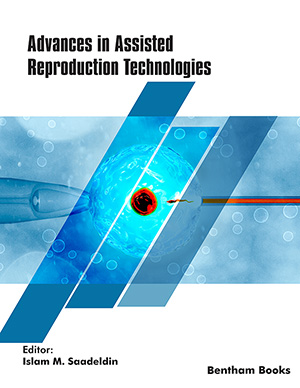Abstract
Cholesterol metabolism is a crucial mechanism for preserving cellular functionality, and overall human health. Cardiovascular diseases and other conditions can arise due to dysregulation of cholesterol levels. Bile acids’ enterohepatic circulation greatly influences cholesterol homeostasis. Recent research has emphasized the essential role of the gut microbiota in bile acid metabolism and its association with cholesterol regulation. Living microbial supplements known as probiotics have been studied as a potential means of reducing cholesterol by modifying the gut microbiome. This review explores existing theories of how probiotic production and modification of bile acids affect cholesterol metabolism. Discussion ensues regarding the processes by which probiotics lower cholesterol, including bile acid deconjugation, conversion of cholesterol to coprostanol and cholestenone, co-precipitation of cholesterol with deconjugated bile, and disruption of cholesterol micelles by Bile Salt Hydrolase (BSH). According to research, there are significant therapeutic ramifications in understanding the complex interactions between the gut microbiome and host cholesterol metabolism. More research is required to comprehend the causal mechanisms further and produce new methods for lowering microbiota-mediated cholesterol to improve human health.
Keywords: Gut microbiota, probiotics, cholesterol reduction, bile acid metabolism, bile salt hydrolase (BSH), cardiovascular diseases.
[http://dx.doi.org/10.1016/j.pop.2012.11.003] [PMID: 23402469]
[http://dx.doi.org/10.1155/2009/501739] [PMID: 19636418]
[http://dx.doi.org/10.1016/j.biopha.2020.110310] [PMID: 32504921]
[http://dx.doi.org/10.3390/ijms22158074] [PMID: 34360839]
[http://dx.doi.org/10.1007/s00253-019-09927-4] [PMID: 31201452]
[http://dx.doi.org/10.1517/14712598.2013.758706] [PMID: 23350815]
[http://dx.doi.org/10.3727/105221618X15156018385515] [PMID: 29325602]
[http://dx.doi.org/10.1128/AEM.00137-08] [PMID: 18539794]
[http://dx.doi.org/10.1016/j.mam.2017.06.002] [PMID: 28602676]
[http://dx.doi.org/10.1093/lambio/ovad024] [PMID: 36758963]
[http://dx.doi.org/10.1128/AEM.68.9.4689-4693.2002] [PMID: 12200334]
[http://dx.doi.org/10.3168/jds.S0022-0302(06)72207-X] [PMID: 16606710]
[http://dx.doi.org/10.3168/jds.S0022-0302(05)72662-X] [PMID: 15591367]
[http://dx.doi.org/10.1016/j.idairyj.2009.10.003]
[http://dx.doi.org/10.3168/jds.2009-2574] [PMID: 20338415]
[http://dx.doi.org/10.1152/ajpgi.00052.2006] [PMID: 16990449]
[http://dx.doi.org/10.1038/s41579-019-0256-8] [PMID: 31541197]
[http://dx.doi.org/10.1080/1040841X.2021.1902940] [PMID: 33822669]
[http://dx.doi.org/10.1016/j.tim.2022.08.003] [PMID: 36008191]
[http://dx.doi.org/10.1016/j.cell.2015.01.036] [PMID: 25815993]
[http://dx.doi.org/10.1038/nrn3012] [PMID: 21448224]
[http://dx.doi.org/10.1016/j.livres.2017.05.001] [PMID: 29104811]
[http://dx.doi.org/10.1136/bmjopen-2013-004487] [PMID: 24747790]
[PMID: 22998604]
[http://dx.doi.org/10.1194/jlr.R500013-JLR200] [PMID: 16299351]
[http://dx.doi.org/10.1194/jlr.R900007-JLR200] [PMID: 19346331]
[http://dx.doi.org/10.1073/pnas.0506982103] [PMID: 16410358]
[http://dx.doi.org/10.1097/MOG.0000000000000156] [PMID: 25584736]
[http://dx.doi.org/10.1038/nature04330] [PMID: 16400329]
[http://dx.doi.org/10.1159/000324126] [PMID: 21691102]
[http://dx.doi.org/10.1039/D1FO03143K] [PMID: 34935837]
[http://dx.doi.org/10.1194/jlr.R024794] [PMID: 22550135]
[http://dx.doi.org/10.3390/foods10030674] [PMID: 33810002]
[http://dx.doi.org/10.1371/journal.pone.0187964] [PMID: 29228000]
[http://dx.doi.org/10.1155/2012/902917] [PMID: 22611376]
[http://dx.doi.org/10.1016/j.jacl.2008.01.004] [PMID: 19343078]
[http://dx.doi.org/10.3390/microorganisms9091881] [PMID: 34576776]
[http://dx.doi.org/10.4161/19490976.2014.969986] [PMID: 25483337]
[http://dx.doi.org/10.1002/cphy.c120023] [PMID: 23897684]
[http://dx.doi.org/10.1016/B978-012088394-3/50059-3]
[http://dx.doi.org/10.1097/MOG.0000000000000057] [PMID: 24625896]
[http://dx.doi.org/10.1038/ejcn.2012.126] [PMID: 22990854]
[http://dx.doi.org/10.1007/s00018-008-7568-6] [PMID: 18488143]
[http://dx.doi.org/10.3748/wjg.15.804] [PMID: 19230041]
[http://dx.doi.org/10.1016/j.femsre.2004.09.003] [PMID: 16102595]
[http://dx.doi.org/10.1016/j.cmet.2013.01.003] [PMID: 23395169]
[http://dx.doi.org/10.1016/S0021-9258(18)71221-0] [PMID: 13211667]
[PMID: 10090024]
[http://dx.doi.org/10.3382/ps.0750743] [PMID: 8737839]
[http://dx.doi.org/10.1111/j.1472-765X.1995.tb00410.x] [PMID: 7766068]
[http://dx.doi.org/10.1093/femsle/fnx007] [PMID: 28087615]
[http://dx.doi.org/10.1007/s00253-015-6564-7] [PMID: 25863679]
[http://dx.doi.org/10.1016/0039-128X(95)00173-N] [PMID: 8789734]
[http://dx.doi.org/10.1128/AEM.02806-06] [PMID: 17616613]
[http://dx.doi.org/10.1016/j.chom.2020.05.013]
[http://dx.doi.org/10.1016/j.foodres.2018.06.035] [PMID: 30131136]
[http://dx.doi.org/10.1186/s40168-019-0628-3] [PMID: 30674356]
[http://dx.doi.org/10.3389/fphar.2021.796590] [PMID: 34992541]
[http://dx.doi.org/10.1128/AEM.72.3.1729-1738.2006] [PMID: 16517616]
[http://dx.doi.org/10.1194/jlr.R088989] [PMID: 30487175]
[http://dx.doi.org/10.1080/19490976.2015.1134082] [PMID: 26963409]
[http://dx.doi.org/10.1093/ajcn/71.3.674] [PMID: 10702159]
[http://dx.doi.org/10.1155/2018/3428437] [PMID: 30246019]
[http://dx.doi.org/10.1016/j.cgh.2018.09.028] [PMID: 30267869]
[http://dx.doi.org/10.1155/2022/3900835] [PMID: 36193065]
[http://dx.doi.org/10.14218/JCTH.2014.00037] [PMID: 26357637]
[http://dx.doi.org/10.1016/j.foodres.2021.110716] [PMID: 34865747]
[http://dx.doi.org/10.1016/j.phanu.2020.100182]
[http://dx.doi.org/10.3390/foods8030092] [PMID: 30857316]
[http://dx.doi.org/10.3390/nu12071921] [PMID: 32610476]
[http://dx.doi.org/10.1007/s13167-017-0117-3] [PMID: 29209439]
[http://dx.doi.org/10.1096/fasebj.30.1_supplement.289.6]



























